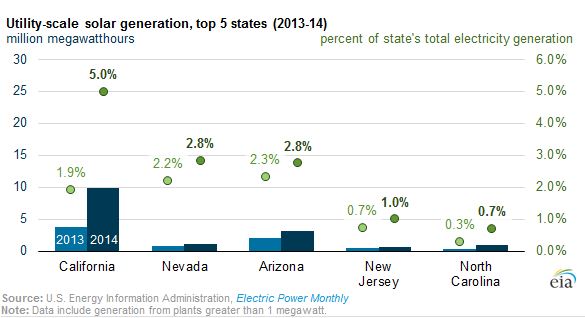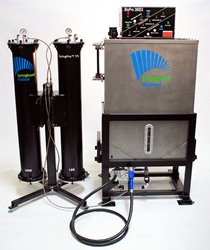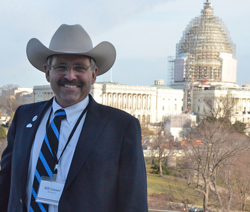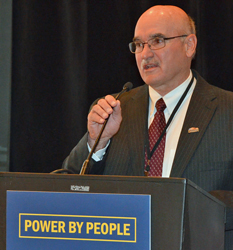A recent Today in Energy article states that California has become the first state to generate more than 5 percent of its annual utility-scale electricity generation from solar power. The EIA Electric Power Monthly reported that the state’s utility-scale (1 MW or larger) solar plants generated a record 9.9 million MWh (megawatt hours) of power in 2014. a 6.1 million MWh increase from 2013. California’s utility-scale solar production in 2014 was more than three times the output of the next-highest state, Arizona, and also more than all other states combined.
 The Today in Energy article cites the record achievement in part due to several large plants that were phased into operation in California during 2014, including two 550 MW solar photovoltaic plants, Topaz and Desert Sunlight (Phases 1 and 2), as well as the 377 MW Ivanpah (Phases 1, 2, and 3) and the 250 MW Genesis solar thermal plants. In total, nearly 1,900 MW of new utility-scale solar capacity was added, bringing the state’s utility-scale capacity for all solar technologies to 5,400 MW by the end of 2014.
The Today in Energy article cites the record achievement in part due to several large plants that were phased into operation in California during 2014, including two 550 MW solar photovoltaic plants, Topaz and Desert Sunlight (Phases 1 and 2), as well as the 377 MW Ivanpah (Phases 1, 2, and 3) and the 250 MW Genesis solar thermal plants. In total, nearly 1,900 MW of new utility-scale solar capacity was added, bringing the state’s utility-scale capacity for all solar technologies to 5,400 MW by the end of 2014.
California has promoted solar power through a series of state policies, including a renewable portfolio standard (RPS) that requires electricity providers to obtain 33% of the power they sell from eligible renewable sources by 2020. In 2014, the state obtained 22% of its electricity from nonhydropower renewables including wind, solar, and biomass.
California also created incentives, including rebates and net-metering policies, to encourage rooftop and other small-scale solar capacity, whose generation is not captured in the above figure. By the end of 2014, more than 2,300 MW of small-scale solar capacity was installed on homes and businesses, according to the California Public Utilities Commission.
The top three states in utility-scale solar generation in 2014 were California, Arizona, and Nevada. However, states with less-favorable solar resources, such as New Jersey and Massachusetts, also are among the top 10 states in total solar generation. All of the top 10 states—with the exception of Florida—have a renewable portfolio standard in place. Most of those policies include a specific target for solar power or customer-sited generation.
 U.S. troops in Afghanistan will soon get some small-scale biodiesel makers. Springboard Biodiesel has been selected to provide the turn-key equipment at Bagram Air Base in Afghanistan.
U.S. troops in Afghanistan will soon get some small-scale biodiesel makers. Springboard Biodiesel has been selected to provide the turn-key equipment at Bagram Air Base in Afghanistan. 









